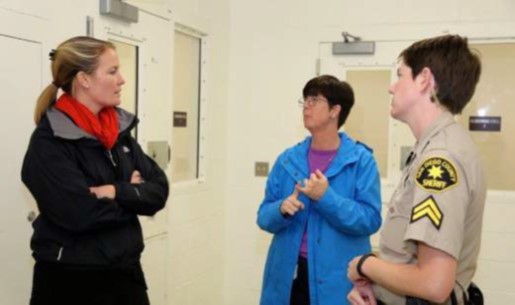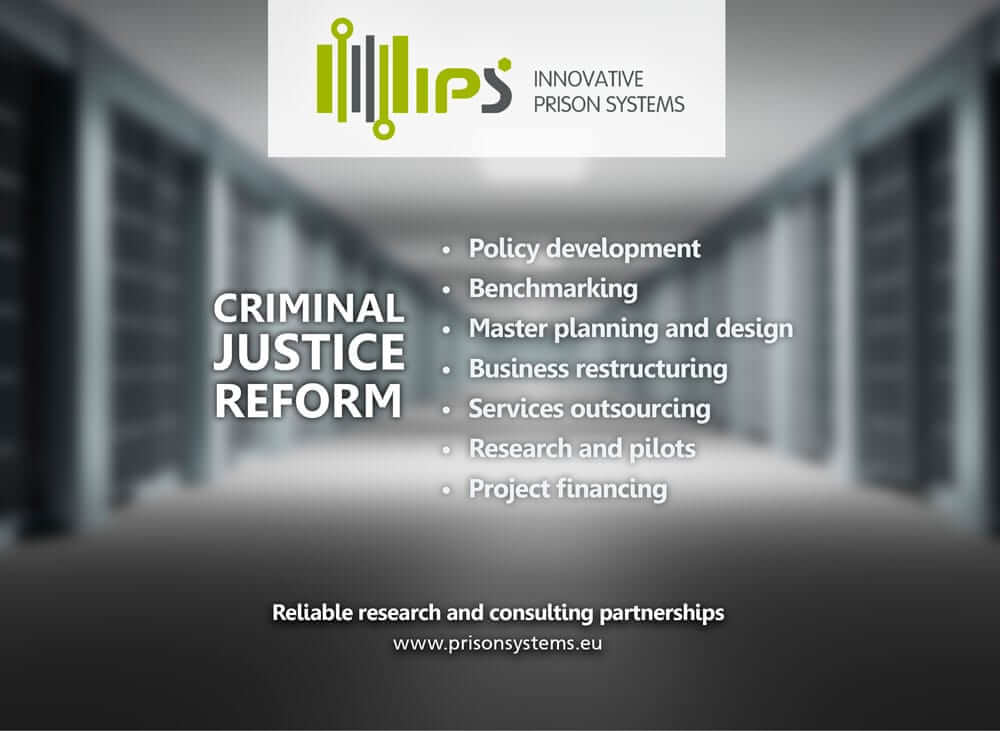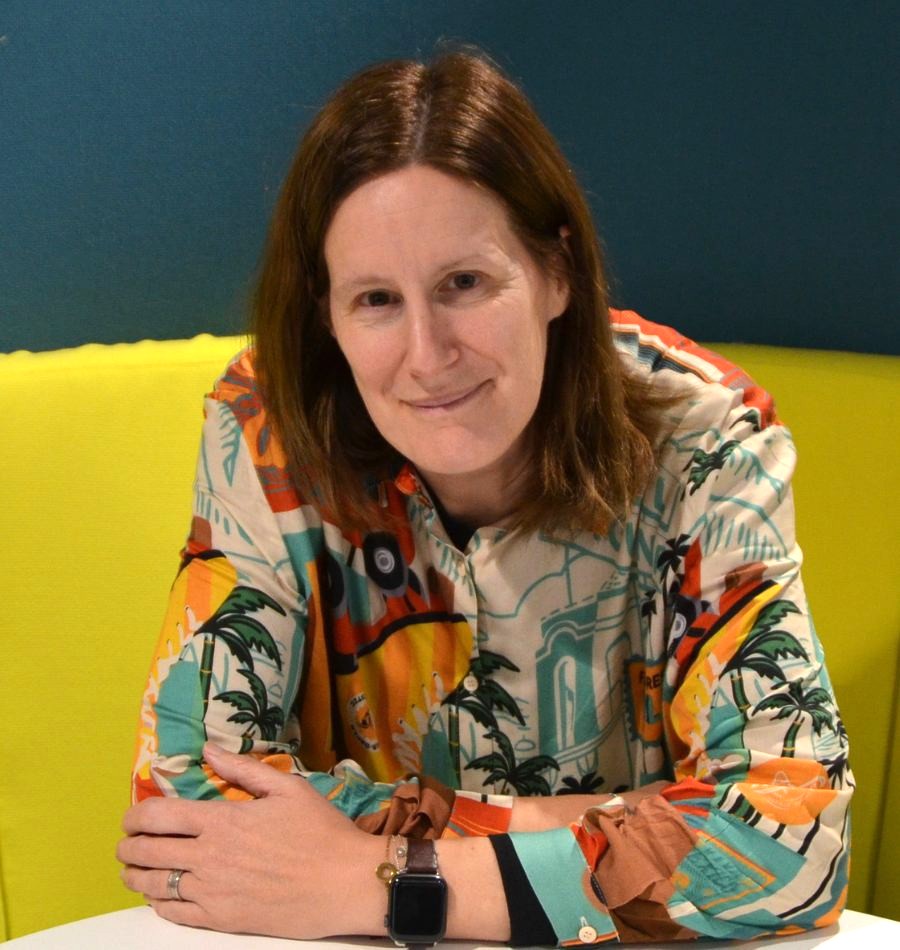// Interview: Lady Edwina Grosvenor
Prison Philanthropist, UK
JT: When and how have you awaken to the passion of working on behalf of prison reform?
EG: I was 18 years old when I went into a prison for the first time. It was a women’s prison in Kathmandu, Nepal. I was struck by two overwhelming feelings – despair and excitement. Despair that anyone could think that this is an effective way to fix a societal problem and excitement about the fact that it seemed to me you would have to do very little in order to make a great change.
JT: Can you please let us know more about the prison projects you’re involved in?
EG: I work with many charitable organisations which work in the Criminal Justice system in the UK as I am a philanthropist, but the two areas I am concentrated on at the minute is The Clink Restaurant chain of which I am a founding trustee and also my work across the female prison estate.
I met Dr Stephanie Covington a couple of years ago when I went to California to learn more about her work. Covington is an expert in trauma and how it manifests itself. She works with both men and women but is vehement in her argument that we need gender-specific policies to reflect the differences between men and women.
Men and women experience trauma differently, this means that their crimes are different, they are committed in different ways for different reasons. Their behaviour and conduct whilst serving time is different, so why give them the same courses, make the same policies when we know that they are not effective? We ignore these differences at our own peril.
Covington trains prison staff in what it is to Become Trauma Informed (BTI), the importance of the women working through their trauma histories together with the women themselves being trained to be facilitators of the groups.
She also explains how we can look at our environments and work towards minimising the effects of trauma through lighting, posters on walls, how we speak to each other, and virtually every aspect of how we do business as usual.
We are almost two years through this process in the UK and the training of staff has been taken up enthusiastically and has been added onto prison officer training which is fantastic. We have also had the first group of women prisoners facilitate one of Dr Covington’s 5-week Healing Trauma course.
The feedback was excellent and it’s being rolled out as we train more and more women. The male prison estate is interested in this work so we are carefully thinking about how this may be done as we have many more men’s prisons!
JT: The Clink restaurants are known for their contribution in helping ex-offenders developing new competences and finding a job, aiming to support social and professional reinsertion and reducing recidivism rates.
Would you recommend other countries to follow the same path?
EG: Of course.
I love what I do, it’s in my DNA and I never feel happier than when I make a small breakthrough either with a prisoner or on a project.
JT: What in your view are the success factors of this project?
EG: The fact that we treat people as humans. We see the potential in individuals, we train people in a skill which we should all be skilled in. Not only does it lead to a job, it’s a life skill as well.
People say what we are doing at The Clink is innovative or revolutionary… I disagree, we are teaching people to cook and restoring their confidence. Quite frankly that’s what services around the world should be doing anyway.
This stuff should be mainstream and not seen as something unusual. You particularly worry about the misconception and prejudice against ex-offenders and its implications when they try to get a job.

JT: Which strategy should be followed if we were to change public awareness “mind”?
EG: The Clink Restaurants act as a great space for the public to come and learn about prisons and prisoners. Many people have very good reason to hate prisoners and to want to avoid being anywhere near a prison.
But the Clink acts as a very safe and non-confrontational space for the public to come face to face with these people. They can see them trying to better themselves, working hard, striving for a better life. It’s also a great place for prisoners to learn to be around the public because of course they are often scared too.
One should be careful about the idea of trying to “change” people’s minds. I think it’s a better strategy to lead people to a space where they can learn for themselves. No one should be “told” how to feel on these hugely complex and emotive issues.
The other point on this is that just because someone doesn’t have a criminal record it doesn’t mean to say they haven’t committed a crime. There is an element of certainty when you hire an ex-offender, you know EVERYTHING about them. Hire blind and you just never know.
JT: What do you consider to be the main challenges of UK’s prison system?
EG: Understaffing, constant political change, overcrowding, lack of good regimes due to understaffing, the reluctance to search EVERYONE coming in and out of prison in order to bring down contraband.
JT: Are you aware of other prison systems? How do you comment on what you know about other jurisdictions’ systems?
EG: I have been into prisons all over the world and I haven’t seen the silver bullet yet. However, I have seen so many great things that we as a system could copy like in Norway in Halden prison, they don’t allow the men to just use free weights to build muscle.
Muscles are seen as weapons so they encourage more fitness and less body building. They also didn’t have a chapel as such, they had a room where the religious symbol could be projected onto the wall and the seats could be moved around so that it was an accommodating place for whichever religion or religious event was on at the time.
In South Africa, I saw orphaned children from the townships coming into the prison to attend parties that the inmates had put on for them. This was amazing.
I have sat through family restorative justice circles in Hawaii and I have seen the incredible work of Dr Covington in the huge women’s prisons in California. We can and should be learning lessons from all over the world. Both what we can do and most certainly what we shouldn’t do.

JT: We’ve read some people referring to your job and mission within prisons as “unglamorous”, a “thankless cause”.
What are the ideas and feelings that move you, and what is it that inspires you to go on working in this field?
EG: Luckily, I am not either into or impressed by glamour. I believe that I am doing an enormously important job. I love it. It’s in my DNA and I never feel happier than when I make a small breakthrough either with a prisoner or on a project. The Clink gives me such a buzz.
Every time I walk into one of our restaurants, every time I see a prisoner with a bounce in his step because he is at work, when I see them serving the public, when they get a round of applause for the first time in their lives and they shuffle awkwardly, that is the best feeling in the world.
Our reoffending rates at the Clink are just 9% so we know we are and continue to make a difference in these people and their families lives. I have been working in this area for 17 years and I know I will be doing it for the rest of my life, so I very much hope that by the time I am in my 90s I can look back and say that I had a part to play in turning this oil tanker around.
JT: The UK supports and is supported by various EU crime-fighting agencies and presently is still bound by legal outlines coming from the EU.
What are your views on the consequences of Brexit on UK’s criminal justice especially the penitentiary sector and the people affected by it?
EG: Good one! The vote did not go my way; however, I appreciate that it’s now happening and we need to navigate our way through this complex situation. My honest answer is that I don’t know. My cup is always half full so I believe that we can do it.
The man or woman in their cell is probably worrying about their children, fighting off depressive thoughts of self-harm and suicide, not worrying about Brexit. It’s humanity we need to concentrate on when it comes to any institution and we must not lose sight of that when political whirlwinds occur.
My prisons would not be warehouses for the incorrigible but greenhouses for the redeemable.
JT: How do you picture the future of prisons?
EG: I believe there is place for prisons in our society but a very specific kind. I would not have non-violent offenders in my prison, I would not hold people on remand in my prisons.
I would make sure that my prisons were based on Trauma Informed and gender-specific principles, my staff would be well trained and well paid. The people who resided in my prisons would be known not just by their number.
They would be assessed on their need thoroughly and every single person where conceivably possible would be engaged in something other than existence, drug addict or not.
Staff and visitors would be searched on their way in and on their way out without exception. They would be places that helped not harmed.
My prisons would not be warehouses for the incorrigible but greenhouses for the redeemable.
//
Lady Edwina is heiress to a wealthy acquis within the British aristocracy, but she’s been working on the field to create opportunities for prisoners. As a trustee of The Clink Charity, she is the driving force behind a chain of quality restaurants in prisons – called The Clink – that give inmates a chance to learn how to cook, serve and perform front–of–house duties.
Advertisement



